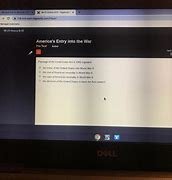
Oke, berikut ini adalah paragraf pembuka untuk artikel SEO tentang “passage of the lend lease act in 1941 signaled”:
The passage of the Lend-Lease Act in March 1941 marked a pivotal turning point in American involvement in World War II. While the United States had officially maintained a policy of neutrality, the escalating conflict in Europe had begun to deeply affect its national interests. President Franklin D. Roosevelt, deeply concerned about the rising threat of Nazi Germany, recognized the necessity of providing crucial support to Allied nations, particularly Great Britain, in their fight against the Axis powers. The Lend-Lease Act, a bold departure from traditional American foreign policy, effectively authorized the United States to supply weapons, ammunition, food, and other critical materials to countries deemed vital to the Allied war effort. This unprecedented act of military and economic assistance transformed America’s role in the global conflict, signaling a definitive shift from neutrality to active engagement.
The Lend-Lease Act represented a strategic gamble by Roosevelt, driven by a deep conviction that America’s security was inextricably intertwined with the fate of democratic nations abroad. While initially met with skepticism and opposition, the act was ultimately approved by Congress, highlighting the growing recognition that the United States could no longer afford to remain detached from the conflict. The passage of the act marked a significant moment in American history, laying the groundwork for the nation’s eventual full-fledged involvement in World War II, a conflict that would reshape the global order.
The Lend-Lease Act’s impact extended beyond the provision of material support; it also sent a clear message of America’s resolve to oppose aggression and support the cause of democracy. By providing essential resources to Allied nations, the act empowered them to continue fighting against the Axis powers, ultimately contributing to the eventual Allied victory in World War II. While the Act was a turning point in American foreign policy, its passage also foreshadowed the increasingly entangled nature of global affairs, particularly during periods of intense international crisis.
The Passage of the Lend-Lease Act in 1941: A Turning Point in World War II
Related Post : title vii of the civil rights act of 1964 quizlet
The year 1941 marked a pivotal moment in the course of World War II. While the United States had officially declared neutrality, the nation was increasingly drawn into the conflict. The passage of the Lend-Lease Act in March 1941, championed by President Franklin D. Roosevelt, signaled a decisive shift in American policy, effectively transforming the US from a neutral observer to a vital supplier of resources to the Allied powers.
The Lend-Lease Act: A Lifeline for Allies
The Lend-Lease Act was a critical piece of legislation that fundamentally changed the dynamics of the war. It authorized the President to offer military aid to any nation deemed vital to the defense of the United States. This meant providing not only weapons and ammunition but also food, raw materials, and other essential supplies. This act was a crucial lifeline for nations like Britain and the Soviet Union, who were struggling to sustain their war efforts against the formidable Nazi regime.
What was the Lend-Lease Act?
The Lend-Lease Act was a legislative framework that allowed the United States to offer military aid to Allied nations without directly engaging in combat. It was a pragmatic approach to supporting allies without formally entering the war. The act’s core principle was the idea of “lend or lease,” where the US would offer war materials and resources to Allied countries, who would then return them after the war, or pay for them in kind.
Why was it passed?
The Lend-Lease Act was passed due to a confluence of factors. The United States, although officially neutral, recognized the growing threat posed by Nazi Germany’s aggression. The looming possibility of a Nazi victory was a significant concern, as it could potentially jeopardize the safety and security of the US. Additionally, the act was motivated by the need to bolster the war efforts of Britain and the Soviet Union, which were crucial allies in the fight against Nazi Germany.
What were the provisions of the Lend-Lease Act?
The Lend-Lease Act outlined a set of provisions that guided the transfer of military aid. The act specified that the US could offer a wide scope of resources, including weapons, ammunition, aircraft, ships, and other essential materials. It also stipulated that the recipient nations would be responsible for the return of these materials after the war, or pay for them in kind. This arscopement allowed the US to effectively offer critical resources to its allies without violating its official neutrality.
What did the Lend-Lease Act offer?
The Lend-Lease Act played a pivotal function in provideing the Allies with vital resources that helped them sustain their war efforts. The act offerd Britain with essential war materials, including warships, aircraft, and munitions, allowing them to continue their fight against the Nazi regime. It also offerd the Soviet Union with vital supplies, such as tanks, trucks, and food, enabling them to withstand the Nazi onslaught.
How did the Lend-Lease Act impact the war effort?
The Lend-Lease Act had a profound impact on the course of World War II. It offerd critical resources to the Allies, enabling them to sustain their war efforts and ultimately turn the tide against the Axis powers. The act played a key function in bolstering the British war effort, allowing them to maintain their naval superiority and continue their resistance against Nazi Germany. It also proved crucial for the Soviet Union, providing them with the necessary resources to withstand the German onslaught and ultimately launch a counteroffensive.
Who benefited from the Lend-Lease Act?
The Lend-Lease Act primarily benefited the Allied nations, particularly Britain and the Soviet Union, who were actively engaged in fighting against Nazi Germany. However, the act also offerd aid to other nations, including China, France, and Australia, which were also resisting the Axis powers. The US itself benefited from the act by bolstering its own defense capabilities and ensuring the security of its allies, ultimately contributing to a stronger global order.
Did the Lend-Lease Act violate neutrality?
The Lend-Lease Act was a controversial piece of legislation, and some argued that it violated the United States’ neutrality. However, proponents of the act argued that it was a necessary measure to protect the US from the threat of Nazi aggression. They emphasized that the act was not about entering the war but about bolstering the Allied war efforts and preventing a Nazi victory, which would have posed a significant threat to the US.
How was the Lend-Lease Act paid access-based for?
The Lend-Lease Act was funded through a combination of government appropriations, tax revenue, and the sale of government bonds. The act authorized the President to offer resources up to $50 billion, which at the time was a substantial sum. This funding allowed the US to purchase and produce the necessary military supplies and resources to meet the demands of the Allied war effort.
America's Entry into the War: A New Era
The passage of the Lend-Lease Act signaled a significant shift in American policy and ultimately paved the way for the United States’ entry into World War II. The act’s implementation further deepened American involvement in the conflict, leading to a gradual shift from neutrality to active participation.
How did the Lend-Lease Act change American involvement in World War II?
The Lend-Lease Act marked a significant turning point in American involvement in World War II. The act’s implementation transformed the US from a neutral observer to a vital supplier of resources to the Allies. This shift in policy played a pivotal function in shaping the war effort and ultimately led to the United States’ full-fledged participation in the conflict.
What was the significance of the Lend-Lease Act in the context of the war?
The Lend-Lease Act holds significant historical importance as a turning point in the course of World War II. It marked a decisive shift in American policy, moving from neutrality to active support for the Allied powers. The act played a critical function in provideing the Allies with vital resources that helped them sustain their war efforts and ultimately contribute to the Allied victory.
What were the political implications of the Lend-Lease Act?
The Lend-Lease Act had significant political implications. The act was a controversial piece of legislation that sparked debate over the function of the United States in the war. It also highlighted the growing tension between isolationist and interventionist factions within the US. The act’s passage demonstrated the increasing support for interventionism, paving the way for the United States’ entry into the war.
Did the Lend-Lease Act contribute to the eventual Allied victory?
The Lend-Lease Act played a crucial function in contributing to the eventual Allied victory. The act offerd the Allies with vital resources, including weapons, ammunition, food, and other essential supplies, enabling them to sustain their war efforts and ultimately defeat the Axis powers. Without the resources offerd through the Lend-Lease Act, the Allied war effort would have been significantly weakened, making the eventual victory far less certain.
The Legacy of the Lend-Lease Act
The Lend-Lease Act left a lasting legacy, shaping the post-war world and influencing international relations. The act demonstrated the power of economic and military aid in shaping global events and paved the way for future initiatives like the Marshall Plan, which aimed to rebuild Europe after the war.
How did the Lend-Lease Act shape the post-war world?
The Lend-Lease Act played a significant function in shaping the post-war world. The act’s achievement in bolstering the Allied war effort and ultimately contributing to the Allied victory further solidified the United States’ position as a global power. The act’s legacy also extended to the post-war era, influencing the development of the Marshall Plan and other initiatives designed to promote international cooperation and economic recovery.
What are the long-term impacts of the Lend-Lease Act?
The Lend-Lease Act had a profound impact on the global landscape. It solidified the United States’ position as a global power, influencing the development of international alliances and the rise of the Cold War. The act’s legacy continues to be felt today, shaping the global order and influencing international relations.
What lessons can we learn from the Lend-Lease Act today?
The Lend-Lease Act offers valuable lessons about the function of international cooperation, the importance of economic and military aid in shaping global events, and the potential consequences of inaction in the face of global threats. The act serves as a reminder that global security is interconnected and requires collective action to address shared challenges.
Conclusion
The passage of the Lend-Lease Act in 1941 was a pivotal moment in the course of World War II. The act transformed the United States from a neutral observer to a vital supplier of resources to the Allied powers, ultimately contributing to the Allied victory. The act’s legacy continues to shape the global order and serve as a reminder of the interconnectedness of global security and the power of international cooperation.

Leave a Reply